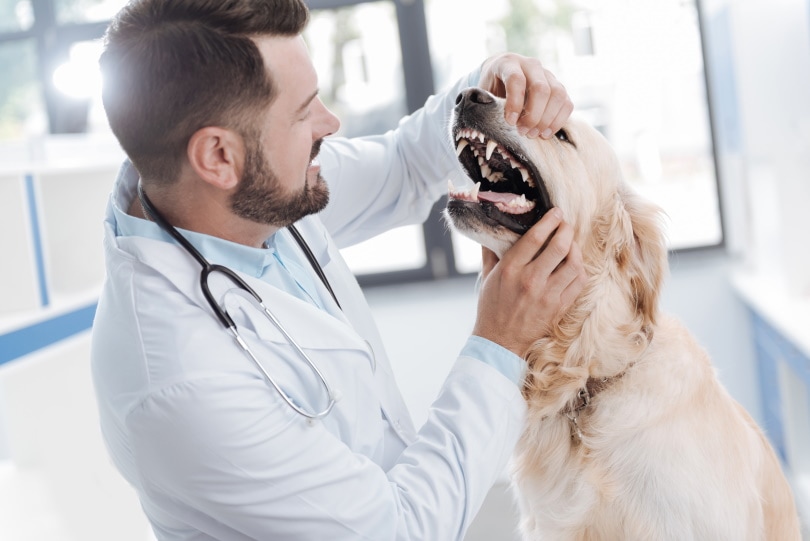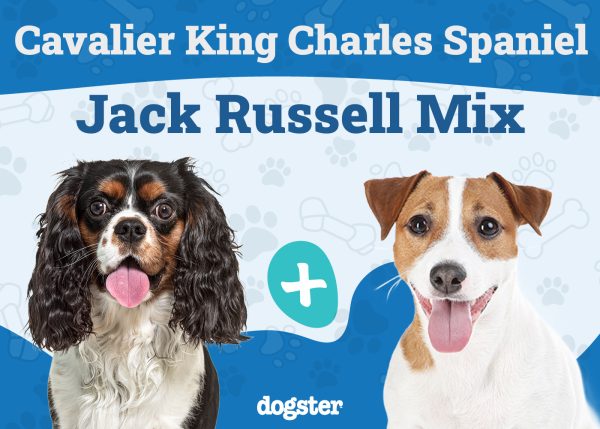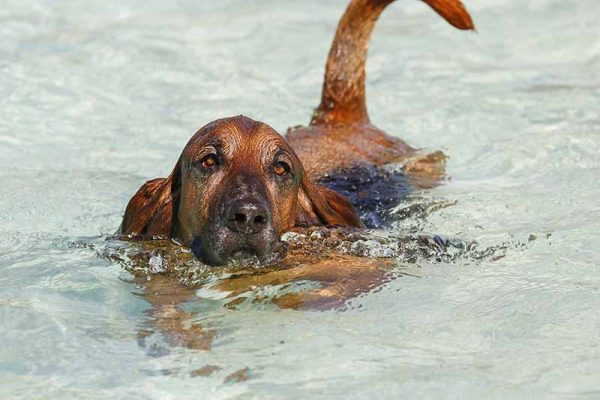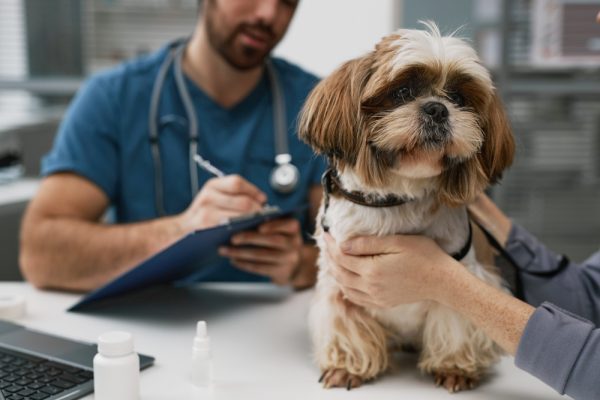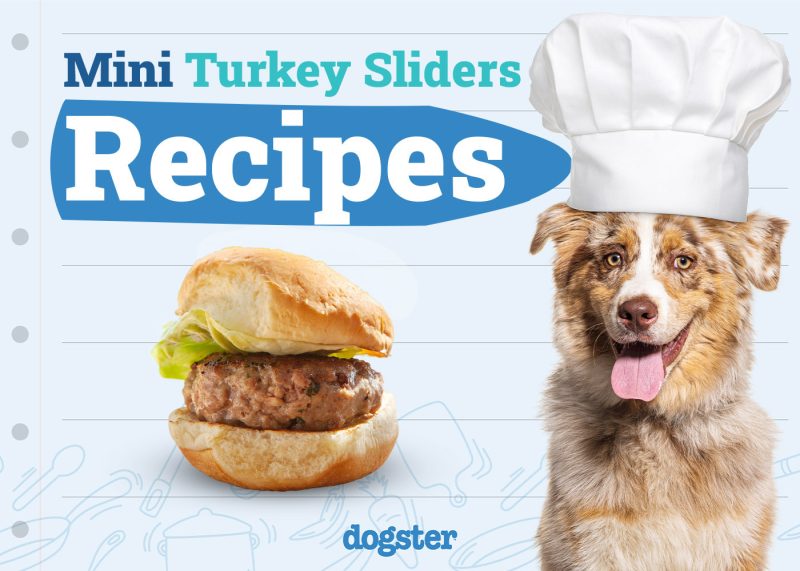Dental disease is such a common issue in dogs, that it is critical to be aware of the possible types and causes in your pup. Further, because it can be extremely painful, and can lead to serious complications, such as facial abscesses, sinus infections, or serious disruption to their appetite, this condition is best identified quickly when it occurs.
Routine homecare and annual exams with a vet are key components of an oral care routine for your pup. But, knowing what to watch for is helpful in catching any early changes that may indicate your dog is experiencing a dental disease.
Read on to learn more about the five most common dental diseases in dogs, the causes, the treatments, and the prognosis for each.

The 5 Dental Diseases in Dogs
1. Gum Disease
Gingivitis or gum disease, also known as periodontal disease, is signified by the typical reddened or bleeding gums—similar to the same condition in humans. Unfortunately, it’s not possible to floss your dog’s teeth!
Causes: Gingivitis can be caused by bacterial infections, reactions to plaque or enamel, or potential viruses.
Treatments: Treatment is aimed at reducing inflammation. The first part of this may include antibiotic therapy or pain medication, but the underlying treatment is dental cleaning.
Prognosis: Treatment is often quite effective, especially in simple cases of gingivitis.
If you are concerned about the health and well-being of your pet, seek veterinary advice for the best course of action.
Did you know you can speak to a veterinarian without having to travel? Just head over to PangoVet. It's an online service where you can talk to a vet online and get the advice you need for your pet — all at an affordable price!

2. Improper Tooth Development
Puppies can have all sorts of issues that relate to improper development of their dental anatomy. This can include overbites or underbites, retained teeth, misaligned teeth, and retained puppy teeth.
Causes: Genetics may play a role in some cases, though many causes remain undetermined. Breed standards can also play a role in facial conformity.
Treatment: Sometimes removal of extra teeth or retained teeth will be required, and will effectively resolve any issues. However, true genetic issues as they relate to facial conformation are almost impossible to properly treat.
Prognosis: The prognosis of improper tooth development depends on the specific issue at hand.
3. Oral Trauma
Whether receiving direct trauma to the face, such as being hit by a car, or being impaled by a stick during play, dogs are known to frequently get themselves into pickles that cause trauma to their mouths.
Causes: Causes can include blunt trauma, penetrating wounds, and chewing on hard, and sharp objects, to name a few.
Treatments: The trauma must be treated once it is identified. In cases of blunt trauma, this may include surgery to remove affected teeth, or repair damaged tissue, pain medications, or antibiotics if concerns for infections exist.
Prognosis: Generally, treatment is effective at resolving any issues, though, if the damage is severe, healing can take time.

4. Fractured Teeth
Fractured teeth are often seen in dogs that like to chew, especially on inappropriate objects!
Causes: Chewing on objects harder than enamel (such as bones, stones, and other hard objects) is a likely cause of fractured teeth in dogs.
Treatments: If a tooth is fractured, it will usually be extracted. However, root canals can be performed on some teeth to preserve the dog’s overall dentition. And, if the fracture does not involve the pulp canal of the tooth, the tooth may be a candidate for monitoring, without further intervention.
Prognosis: The prognosis is generally good, as extraction or root canals in dogs are very successful treatments for this issue.
5. Abscesses
Abscesses are infections that occur within a dog’s mouth. They generally result from an infected tooth, though not always. Sometimes the infection can drain into the mouth. However, more severe cases may drain into various parts of the skull, such as the nasal passages, or even behind the eye.
Causes: Infected tooth roots are arguably one of the most common causes of abscesses in dogs.
Treatments: Pain medications and antibiotics are the mainstays of treatment for this condition. If these are not effective in resolving the condition, sometimes surgical opening and drainage of the abscess might be required.
Prognosis: Most infections are fairly responsive to the above treatments, and long-term prognosis is often good.
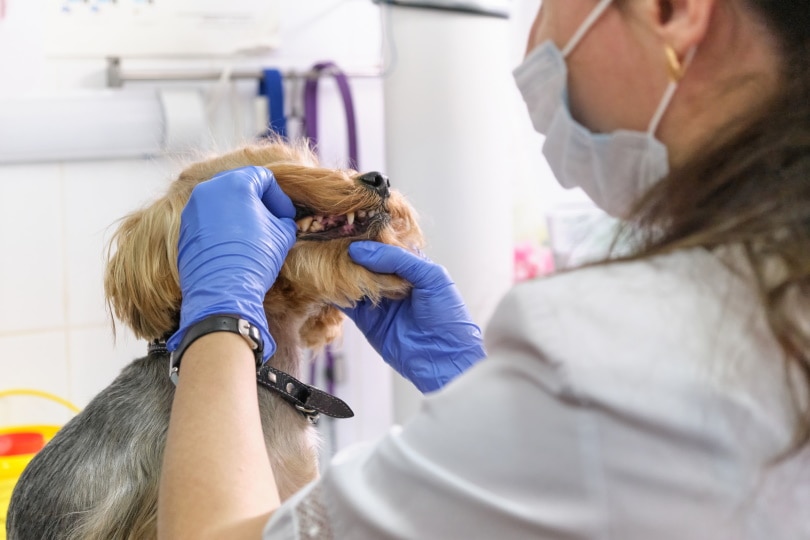

Identifying Oral Pain
It is important to learn to recognize the signs of oral pain in your pup, so you know if something might require closer attention.
- Head shaking
- Grinding of teeth (bruxism)
- Drooling
- Pawing at the face or mouth
- Bad breath (halitosis)
- Frequent burping or air gulping
- Tongue hanging out of their mouth
- Vocalizing or whining while eating
Canine Oral Health Homecare Tips
Some homecare tips for maintaining good oral health for your dog:
- Daily brushing of teeth is an ideal way to keep plaque and tartar at bay, so acclimate puppies early to this procedure.
- Never use human toothpaste with pets, as fluoride and other substances are toxic to them!
- Get your pup used to gently touching their mouth and lifting their lips; reward them with treats or play after doing this.
- Progress gradually to using a finger toothbrush or actual toothbrush gently on the outer surface of the teeth.
- Over time, spend longer periods, and use a firmer pressure to actually clean the tooth surface in a back-and-forth motion


Conclusion
Dental disease is easily one of the most common diseases seen in both young and old dogs alike. Learning the early signs of dental disease can be key to detecting issues before they become major, so they can be addressed before more serious complications occur. Annual physical examinations are also critical to allow a veterinary professional to use their expertise to detect early changes that may indicate oral health problems.
See also:
- Can I Treat My Dog’s Abscess at Home? Our Vet Explains
- Checkups Dental Dog Treats Review: Pros, Cons, Recalls & Verdict
Featured Image Credit: VIACHESLAV, Shutterstock
